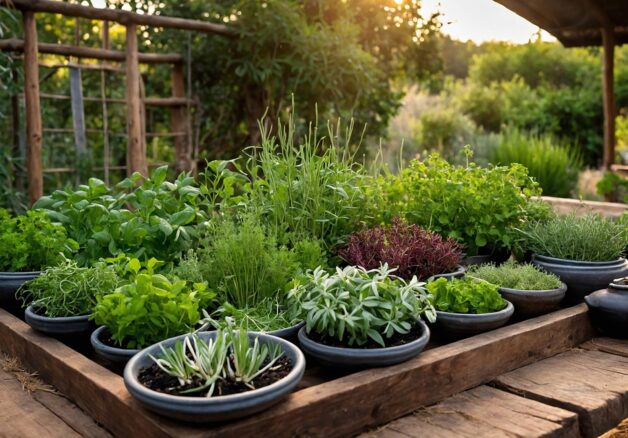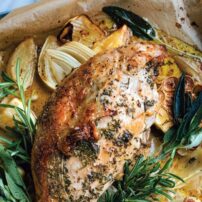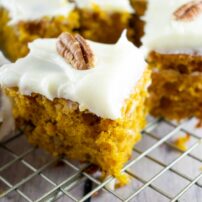 With summer fast approaching and the weather getting warmer, now is the perfect time to start planting and growing your own vegetables. Growing vegetables in pots is great for those who are short on space and ideal for both beginners and experts alike.
With summer fast approaching and the weather getting warmer, now is the perfect time to start planting and growing your own vegetables. Growing vegetables in pots is great for those who are short on space and ideal for both beginners and experts alike.
As well as being a great way to incorporate more fresh vegetables into your diet, the process of planting and growing is something that many people find rewarding and therapeutic. Here are 10 top vegetables to get planting in your garden pots.
Kale
Kale has enjoyed a huge rise in popularity over recent years due to its superfood status. Tasty, nutritious and easy to grow, kale is a member of the cabbage family and works wonderfully both as mini salad leaves and tasty greens for cooking or adding to smoothies.
Smaller varieties of kale can be easily grown in containers, and you can even grow one or two kale plants in a pot along with your annual flowers or perennials. Kale likes to germinate in cooler temperatures, so it’s best planted either in early spring or autumn, and you can expect a harvest 30-40 days later. Grow in a pot that is at least 12 inches in diameter and use a well-draining potting mix.
Potatoes
Potatoes are one of the most versatile and beloved vegetables that can be prepared and cooked in many ways to complement an endless variety of dishes. Given that spuds can often grow quite large, you may be surprised to learn that they are also one of the best vegetables to grow in pots.
For planting potatoes, you will need a larger pot that is at least 15 inches deep. Make sure that your pot has some drainage holes and is kept in a sunny, frost-free spot. They are best planted in early March for an early summer harvest — simply tip the pot upside down when the plants start to flower and retrieve your homegrown potatoes from the soil.
Lettuce
Lettuces are easy to grow and come in many colors, flavors and textures, making them a staple for salad dishes. They are among the most popular crops to grow because, in addition to being easy and delicious, they are compact enough for even the smallest gardens and pots.
Lettuce is a cool-season crop, so it’s best sown during early spring for a harvest six to eight weeks after germination. These plants ideally need around eight hours of sunlight every day, but make sure to put them in the shade during the hottest parts of the day if you’re growing them in the summer.
Carrots
Carrots are a traditional grow-your-own favorite that is sweet, tasty and packed with vitamins. Homegrown carrots may not be as straight and aesthetically pleasing as those sold in supermarkets, but they taste so much better when freshly harvested. They’re straightforward to grow from seed, taking up little space, making them perfect for growing in pots and other containers.
Sow small batches of carrots regularly from early spring onward for harvests almost all year round. Prepare a pot with peat-free multipurpose compost, sow the seeds thinly and cover them with another inch of compost before watering well. Note that a deeper pot will be needed for long-rooted carrots unless you plan to harvest them as baby carrots when they are young.
Cherry Tomatoes
Juicy ripe tomatoes picked straight from the plant make for the perfect addition to any summer salad or sandwich, along with a variety of other dishes. Compact, bushy sets of cherry tomatoes are the easiest to grow. They look decorative trailing over the edge of a pot and give bountiful harvests from a single plant.
They’re best planted once the last frost has passed (usually middle to late May), and this should provide a mid to late summer harvest. Place your pots in a warm, sheltered spot and fill about an inch of the rim with moist compost. Cut out holes in growing bags to accommodate the plants and make slits in the base for drainage. Water regularly to keep the compost moist, and as soon as the tomatoes start to form, feed them regularly with a liquid tomato feed.
Radish
Salad radishes are quick and easy to grow from seed and can be grown in even the smallest of spaces. Thanks to their short roots, they’re one of the best vegetables to grow in pots and will not need overly large containers to flourish.
Radishes are quick to mature and are usually ready to be harvested in as little as three weeks. For best results, plant them in spring or early summer in a pot with a diameter of at least 8 inches and a depth of 10 inches. They will require regular watering to keep the soil moist, ensuring even growth and succulent roots that don’t split.
Sugar Snap Peas
Sugar snap peas are known for their wonderful taste and texture, and homegrown varieties are much sweeter and juicier than anything you could buy in a supermarket. Growing sugar snap peas in pots is a simple process so long as the pots are large and you water and feed them regularly.
Pots are best placed in a sheltered spot in full or partial sun. It’s a good idea to make several sowings at two- or three-week intervals to increase the potential harvesting period.
Water regularly, as peas will need moist soil to produce a heavy crop. In drier conditions, it’s a good idea to mulch the soil to conserve more moisture.
Cucumbers
Cucumbers are a delicious and nutritious vegetable that can easily be grown in pots. This makes them perfect for people who don’t have access to a large garden or wish to grow them on a balcony or terrace. Cucumbers are ready to harvest when they are 6-8 inches long and firm to the touch — usually about eight to 10 weeks after planting.
Start off your cucumbers by sowing them in a seed tray during March or April when the soil has started to warm up. By May or June, the seedlings should be ready to be gently removed from the tray and planted in individual pots. Water them thoroughly and keep pots in a warm, sunny spot.
Green Beans
Green beans are a great way to up the amount of greens in your diet and are another easy vegetable for planting and growing in pots. These crops are best planted in late May, and no matter the size of your garden, you can produce a bountiful green bean crop in containers all season long.
Green beans prefer mild to warm temperatures, but as long as you wait until the last frost has passed, you should still see a germination that is ready to harvest three to four weeks later. These plants are climbers, so give them a little extra support with a stake or trellis.
Spring Onions
Spring onions, also known as scallions, are a quick and easy-to-grow vegetable that provides a great ingredient for salads and stir-fries, among other dishes. With varieties that can be grown all through the winter months, they have a long cropping season. They don’t require much space, making them ideal for growing in pots.
Plant your spring onion seeds into a pot with a diameter and depth of at least 12 inches. Place the pots in an open, sunny site and add rich, well-drained soil that should be further prepared by adding a good quality fertilizer. Make sure you keep your crops well-watered so that the soil doesn’t dry out.
Final Thoughts
We have rounded up some of our top picks for vegetables, which are simple and easy to grow in pots, as well as being truly delicious. These crops don’t require a lot of effort to grow but can still be enjoyed in plentiful supply when they are ready to harvest — so get those pots prepared and start planting.




























